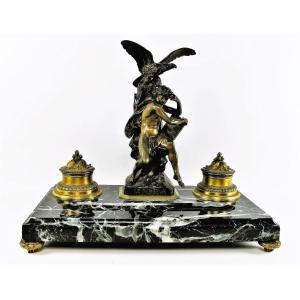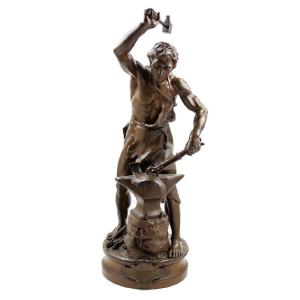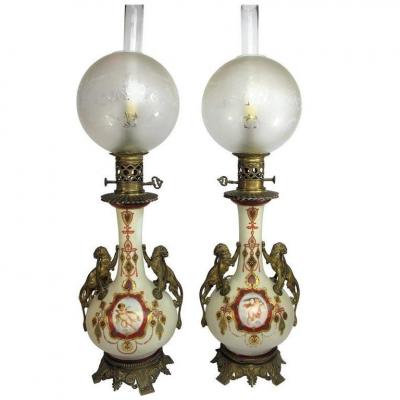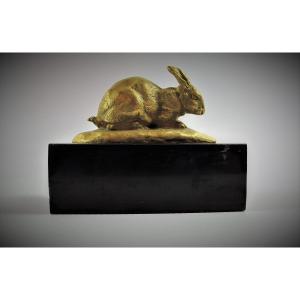Bibliography : S. Richemond, The Orientalists , 2008, p.138, 139, 140, 141, 142
Period : 1890
Origin : France, Paris
Height : 34.6 in
Width : 11.8 in
Gaston Veuvenot said Leroux (1854-1942), french school
Born of unknow father, in Paris, on september 14 1854, son of Juila Victoire Veuvenot. His moher left for Vienna, Austria and left her son with his grandparents. At the age of twelve, he went with her in Vienna where he kept on his studies. From 1874 to 1877, he took classes at the school of Beaux-Arts of Vienna and worked with Karl Kundmann, director of the sculpting department. He was granted with the Neuling prize for the sculpting of a wildlife model. He went back to France at the end of 1877 and entered the french school of Beaux-Arts, under the direction of François Jouffroy and Ernest Hiolle. He took part in the salon of the French Artists Society in 1881 and thus became a member in 1883. He received honorable mentions in 1882 and 1883 and a third class medal in 1885. He was involved in the 1889 and 1900 World Fairs and was awarded with bronze medals at both. In the 1880s, he dedicated himself to orientalist sculptures for a short period of time. Hence there are ony a very few orientalist models on the market. It seems that they were the only of the kind which were edited and paradoxically Leroux owes them his reputation. His orientalist sculptures gave birth to high quality editions, usually in polychrom spelter, bronze or mixed patinas.
Eugène Blot - Founder and Manufacturer, Paris
This workshop known as Blot and Drouart, at the begining specialized in the « Art Zinc » (which actually is spelter), first produced copies of bronze works, in particuliar sculptors Guillemin's and Dumaige's ones. But at the end of the 19th century, founder's son Eugène Blot decided to go down the path of the founder and editor work. He opened an art gallery at 5 Boulevard de la Madeleine where he exhibited bronzes and also impressionists paintings. It is good to notice Blot admiration for sculptor Camille Claudel, whom he worked for, casting some of her works in numbered limited editions. Among the other sculptors the workshop worked for, we can quote Constantin Meunier, Hoetger, Jouant, Van der Stratten. After retirering in 1937, Eugène Blot yielded the foundry rights to Leblanc-Barbedienne. He did introduce himself as a former art editor living 11 rue Richepanse and say his foundry is located 84 rue des Archives.






































 Le Magazine de PROANTIC
Le Magazine de PROANTIC TRÉSORS Magazine
TRÉSORS Magazine Rivista Artiquariato
Rivista Artiquariato